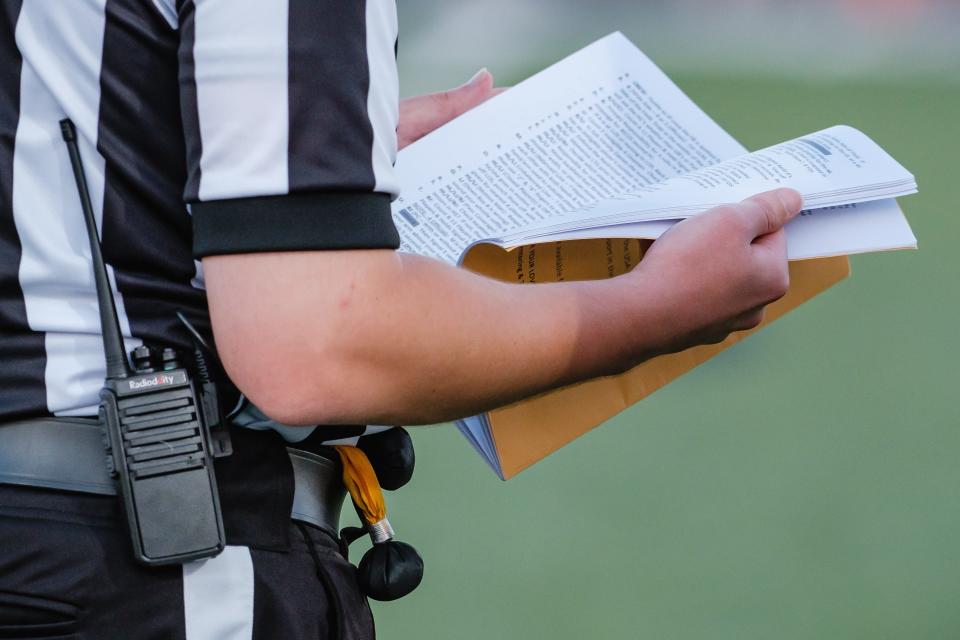Their mangroves are clogging the canal, but who pays to clear waterway?
Live in a home governed by a condominium, co-op or homeowner's association? Have questions about what they can and cannot do? Ryan Poliakoff, an attorney and author based in Boca Raton, has answers.
Question: When a board rejects an application to rent or sell, must it provide the applicant a response stating the reason for denial? Signed M.R.
Dear M.R.,
There is no requirement to do so under state law. However, several counties have ordinances requiring community associations to provide written notice to the applicant of the approval or rejection, and, if the application was rejected, the specific reason or reasons for the rejection (for example, Miami-Dade and Broward Counties have such an ordinance; Palm Beach, Martin and St. Lucie Counties do not). This is to ensure that the rejection was not discriminatory.
More: Condo board refused to update insurance when owners balked at cost. Is that even legal?
Question: I live in a small community governed by an HOA. We have one natural canal that was enhanced and bullheaded. There are five homes that border the canal. The canal is being blocked by mangroves that are rooted in owners’ properties, hanging over the canal and creating a boating obstacle. The board is hiring a licensed tree trimmer to clear the canal, and the expense will be charged to all the owners. I feel the responsibility lies with owners of the mangroves. Who is right? Signed, W.L.
Dear W.L.,
Assuming that the canal is owned by the HOA, it’s the HOA’s responsibility (as a common expense of all the owners) to trim any trees or branches that are hanging over its property.
Under Florida law, a landowner is not responsible when vegetation on their property grows onto neighboring property. The neighboring property owner has a right to cut anything that is intruding onto their land, but they cannot force the vegetation-owning property owner to do so.
So, and unless the canal is owned by those individual homeowners (in which case you probably don’t have a right to use it, anyway), I think the association is handling this situation properly.
More association news: Resident is suspicious of homeowners board that met behind closed doors repeatedly. Wants answers.
Question: We're a community governed by an HOA, with a nine-member master association board. All of the sub-associations have three-member boards.
I'm confused about attending committee meetings, and whether our presence constitutes an illegal board meeting. Since a committee meeting is an extension of the board and is a noticed meeting, I don't think the normal rule against having a quorum should apply.
As currently interpreted, we can't have two members of any of the sub-association boards at a technical oversight committee meeting (as an example). We could have all three at-large members of the master board and one of the sub-association appointed members attend a committee meeting, because the master board quorum is five. How do we deal with this? Signed, D.K.
Dear D.K.,
In most community associations, where board members must also be members of the association, they wear two hats. They are both members of the board of directors, and owners in their own right, with their own interests unrelated to their service on the board.
More: How robot lawn mowers in one West Palm Beach community help fight climate change
As owners, they’re entitled to attend meetings. It would be unreasonably restrictive if a quorum of board members could not be together in the same room when a non-board meeting is being conducted, even if that meeting involves association business. It’s just not what the statute intended.
Section 720.303 of the HOA Act says that “a meeting of the board of directors of an association occurs whenever a quorum of the board gathers to conduct association business.” The Condominium Act is less specific; Section 718.112, Fla. Stat says that “meetings of the board of administration at which a quorum of the members is present are open to all unit owners.”
I think the key concepts here are that they are talking about meetings of the board, where the directors conduct business. A committee meeting is simply not a board meeting, even though that committee may be advising the board.
Consider, for example, that while board members may speak at committee meetings, they have no vote or say in the outcome of the meeting. They can participate, they can give their opinion — but ultimately if the committee wants to ignore them, they have that right.
The board of directors, as an entity, is not conducting business at that meeting, and it was not noticed as a board meeting — so it is not, in fact, a board meeting. As such, it is my opinion that as many board members can attend as would like to do so. Any other interpretation would severely limit their right as owners and be contrary to the intent of the statute (which expressly permits and encourages owner participation in meetings).
Of course, if there are any concerns, the easy solution is to notice a board meeting along with the committee meeting, and then there can be no complaints. But I don’t think it’s necessary.
Ryan Poliakoff, a partner at Poliakoff Backer, LLP, is a Board Certified specialist in condominium and planned development law. This column is dedicated to the memory of Gary Poliakoff. Ryan Poliakoff and Gary Poliakoff are co-authors of "New Neighborhoods — The Consumer’s Guide to Condominium, Co-Op and HOA Living." Email your questions to condocolumn@gmail.com. Please be sure to include your location.


This article originally appeared on Palm Beach Post: HOA should pay to clear mangroves behind homes in Palm Beach County

